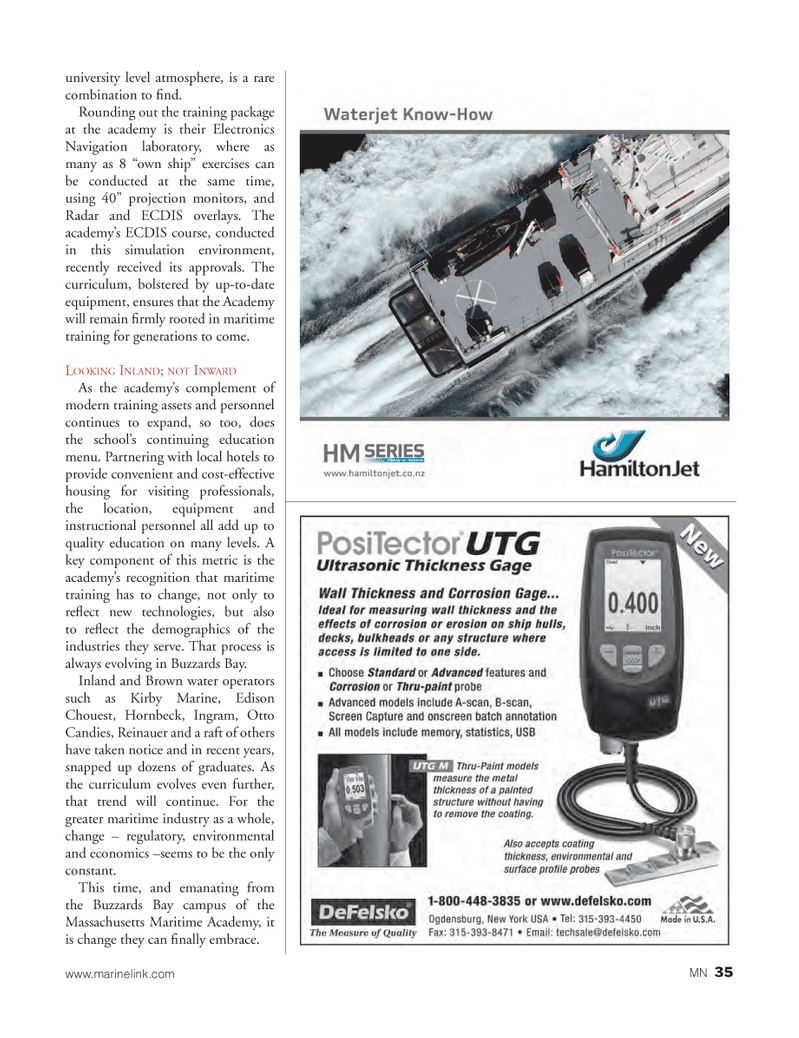
Page 35: of Marine News Magazine (July 2012)
Propulsion Technology
Read this page in Pdf, Flash or Html5 edition of July 2012 Marine News Magazine
university level atmosphere, is a rare combination to Þ nd.Rounding out the training package at the academy is their Electronics Navigation laboratory, where as many as 8 Òown shipÓ exercises can be conducted at the same time, using 40Ó projection monitors, and Radar and ECDIS overlays. The academyÕs ECDIS course, conducted in this simulation environment, recently received its approvals. The curriculum, bolstered by up-to-date equipment, ensures that the Academy will remain Þ rmly rooted in maritime training for generations to come.LOOKING INLAND ; NOT INWARD As the academyÕs complement of modern training assets and personnel continues to expand, so too, does the schoolÕs continuing education menu. Partnering with local hotels to provide convenient and cost-effective housing for visiting professionals, the location, equipment and instructional personnel all add up to quality education on many levels. A key component of this metric is the academyÕs recognition that maritime training has to change, not only to reß ect new technologies, but also to reß ect the demographics of the industries they serve. That process is always evolving in Buzzards Bay. Inland and Brown water operators such as Kirby Marine, Edison Chouest, Hornbeck, Ingram, Otto Candies, Reinauer and a raft of others have taken notice and in recent years, snapped up dozens of graduates. As the curriculum evolves even further, that trend will continue. For the greater maritime industry as a whole, change Ð regulatory, environmental and economics Ðseems to be the only constant. This time, and emanating from the Buzzards Bay campus of the Massachusetts Maritime Academy, it is change they can Þ nally embrace. MN 35www.marinelink.com

 34
34

 36
36
